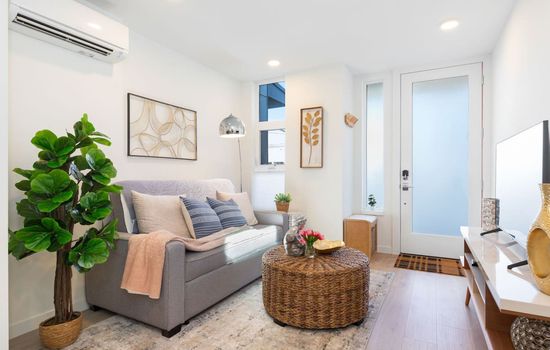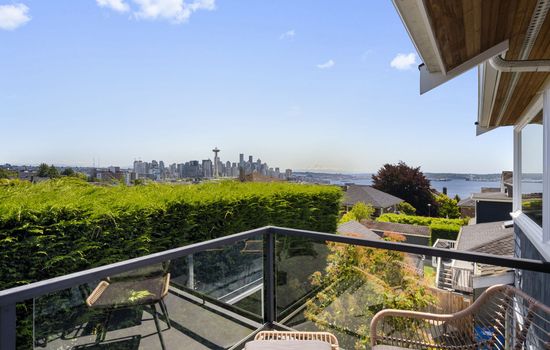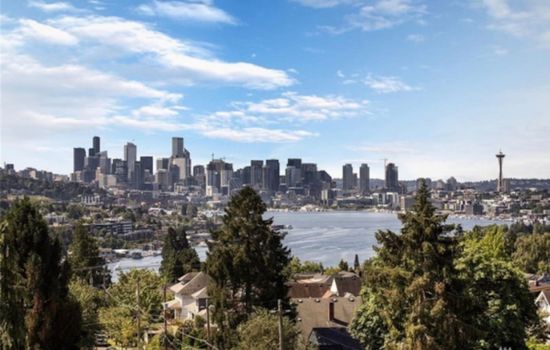At Mount Rainier National Park, the Longmire Wilderness Center is open from May 25 to October 8, 7:30 AM to 5:00 PM daily. The Henry M. Jackson Visitor Center at Paradise is open from May 25 to September 3, 7:00 AM to 4:00 PM daily. The Sunrise Visitor Center operates from July to September, 9:00 AM to 5:00 PM daily. The White River Wilderness Information Center is open from May 25 to October 8, 7:30 AM to 5:00 PM daily.
Mount Rainier National Park entrance fees include a $30 single vehicle fee for seven days, $15 per person, $25 for motorcycles, and a $55 annual pass. Commercial vehicles and other options are also available.
By Car: Approximately 2.5-3 hours from Seattle via WA-7 S and WA-706 E, and 3.5-4 hours from Portland, Oregon via I-5 N and WA-706 E. Public Transportation: Guided bus tours from Seattle/Tacoma; limited direct public transit; seasonal park shuttle operates internally (late June-early September). Air: Nearest major airport Seattle-Tacoma International Airport (SEA), 2-3 hours drive.
At Mount Rainier National Park, parking is limited and first-come, first-served. Cars and motorcycles can park at Paradise and Sunrise, but overflow parking is often needed. RVs over 20 feet must park on Paradise Valley Road. Overnight parking requires a pass. Parking fees apply, $30 for cars, $25 for motorcycles.
Accessibility & permits
Emergency
- Cell service availability:Partial
Information not accurate?
Help us improve by making a suggestion.
Established in 1899, Mount Rainier National Park is one of America’s most iconic parks, featuring the majestic 14,411-foot Mount Rainier, lush subalpine meadows, diverse ecosystems, and over 25 glaciers—the most glaciated peak in the contiguous U.S. outside Alaska. Visitors enjoy hiking, climbing, camping, wildlife viewing, and ranger-led tours. Popular areas include Paradise, Sunrise, and Longmire, offering unparalleled opportunities to explore vibrant wildflowers, scenic vistas, cascading waterfalls, and a peaceful winter wonderland.
- Area (mi²)
- 369
- Annual visitors
- 2 000 000
- Established year
- 1899
Top 3 Facts about Mount Rainier National Park
At an elevation of 5,400 feet, the Paradise area receives an average of 126 inches of precipitation annually, making it one of the wettest places in the contiguous United States.
Mount Rainier, at 14,411 feet, is the tallest peak in the Cascade Range and Washington’s most prominent mountain.
Features diverse ecosystems: old-growth forests, subalpine meadows with wildflowers, and alpine tundra supporting unique flora and fauna.
Family programs
- Junior Ranger
- Ranger-led Tours
- Workshops & Hands-on Activities
- Scavenger Hunts
Travel Tips
Plan Ahead
Research attractions, trails, facilities, make reservations for campsites, lodging, guided tours in advance (especially summer).
Pack Appropriately
Check weather forecasts; pack layers, waterproof gear for unpredictable mountain conditions, even in summer. Bring suitable footwear and gear for altitude and outdoor activities.
Respect Wildlife
Keep safe distance from wildlife; secure food and scented items properly to avoid attracting animals, particularly bears. Follow bear safety guidelines.
Stay Informed
Prepare for altitude changes (over 14,000 feet); stay hydrated, allow time for acclimatization. Check park website for updates on trail conditions, weather forecasts, closures.
Seasons
Wildflowers bloom, snow melts, wildlife emerges; ideal for hiking Skyline Trail, wildlife viewing, and scenic exploration. Trails begin opening, rivers and streams swell with snowmelt.
Peak visitation, warm weather, full access to trails and facilities, ideal for hiking, camping, wildlife watching, ranger-led tours, exploring alpine meadows, glaciers, waterfalls; Paradise and Sunrise popular.
Stunning autumn foliage, cooler comfortable temperatures, picturesque trails like Grove of the Patriarchs and Reflection Lakes, fall festivals nearby (Northwest Chocolate Festival, Autumn Leaf Festival, Ellensburg Oktoberfest). Excellent for hiking, photography, and scenic drives.
Serene snow-covered landscapes, snowshoeing, cross-country skiing, snowboarding at Paradise and Longmire, photography opportunities, quiet trails, and guided snowshoe walks. Trails are groomed and suitable for winter exploration.
Information not accurate?
Help us improve by making a suggestion.
Where to stay
Frequently Asked Questions
Ready to dive into what Mount Rainier National Park has to offer? Let’s tackle some of the burning questions you might have as you plan your visit!
-
The best cities to stay in are Ashford or Packwood. Ashford is ideal if you’re only visiting Paradise, while Packwood is better if you plan to visit both Paradise and Sunrise.
-
The Nisqually Vista Trail is the most family-friendly hike, with a 1.2-mile loop, 180 feet of elevation gain, and an easy, paved path through subalpine meadows, making it suitable for strollers and offering stunning views of Mt. Rainier and the Nisqually Glacier.
-
Dogs are not allowed on trails, except for the Pacific Crest Trail where they can be on a leash no longer than 6 feet. They are permitted in campgrounds, parking lots, and on paved roads.
-
You can park an RV, but only in certain campgrounds and with size limits. Motorhomes up to 35 feet and trailers up to 27 feet are allowed. Campervans and smaller trailers can also fit, but larger RVs are not permitted.
-
Visit the Paradise area and hike the Skyline Loop Trail for stunning views of the mountain and to hear the cracking sounds of the glacier. Stop by the Henry M Jackson Visitor Center for exhibits, a theater, and a gift shop. Take a photo at the Muir Steps, a classic spot featuring words from John Muir. Consider a harder hike to Glacier Vista for up-close views of the Nisqually Glacier. If time allows, drive through the east side and stop at Tipsoo Lake.












